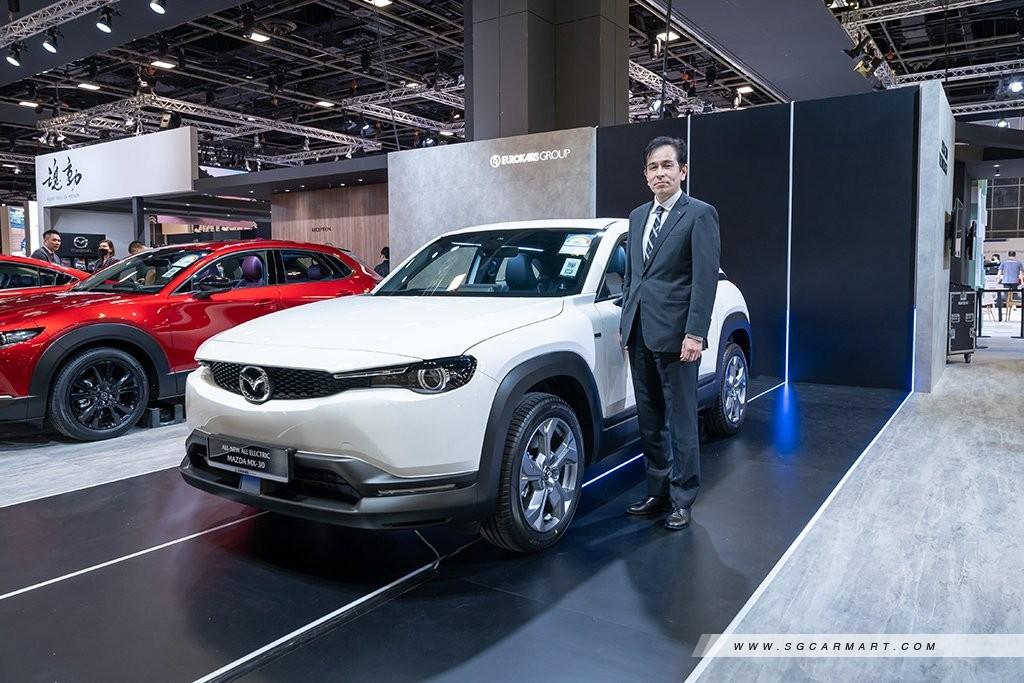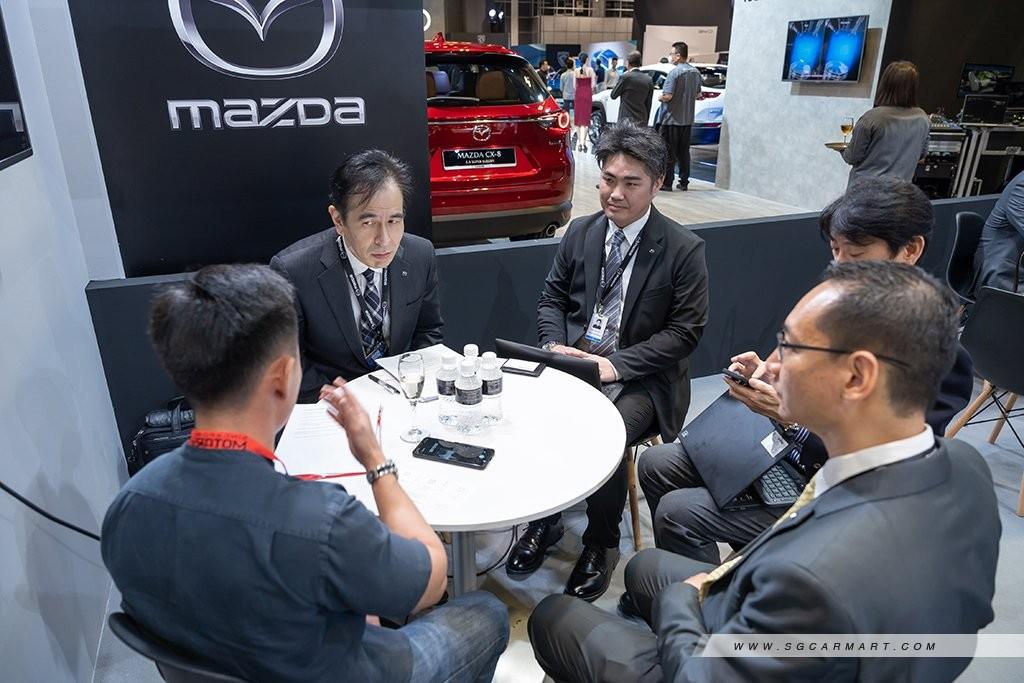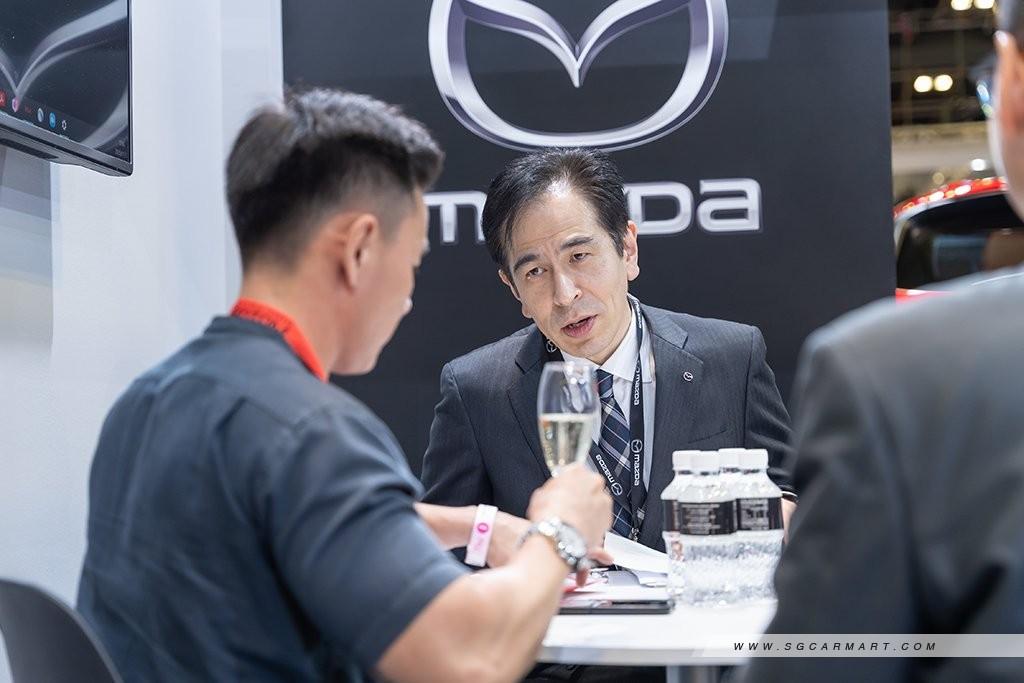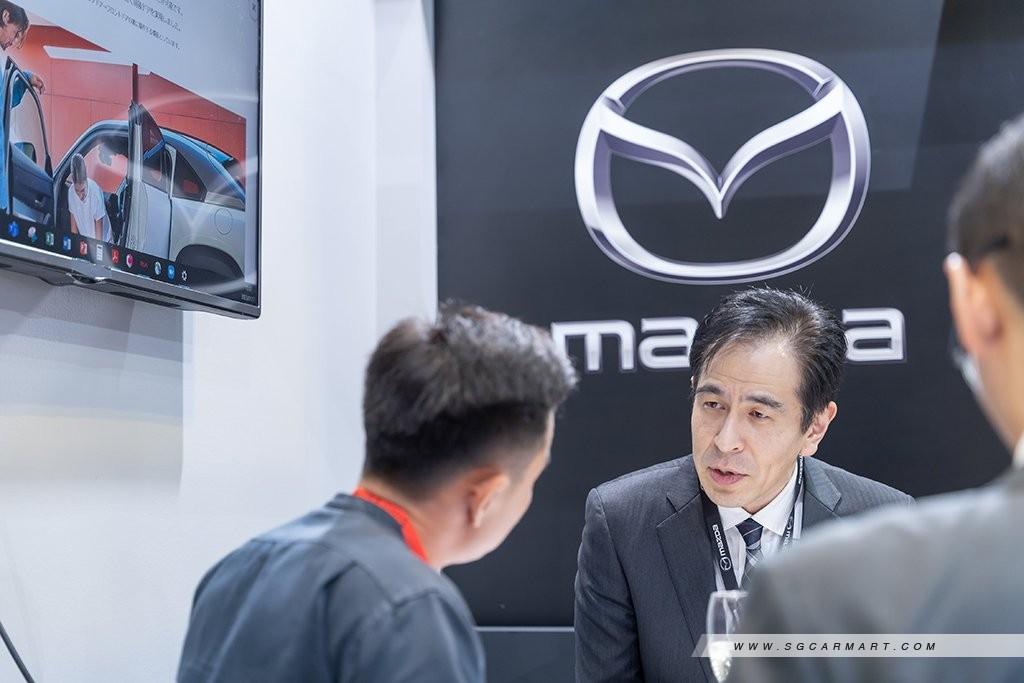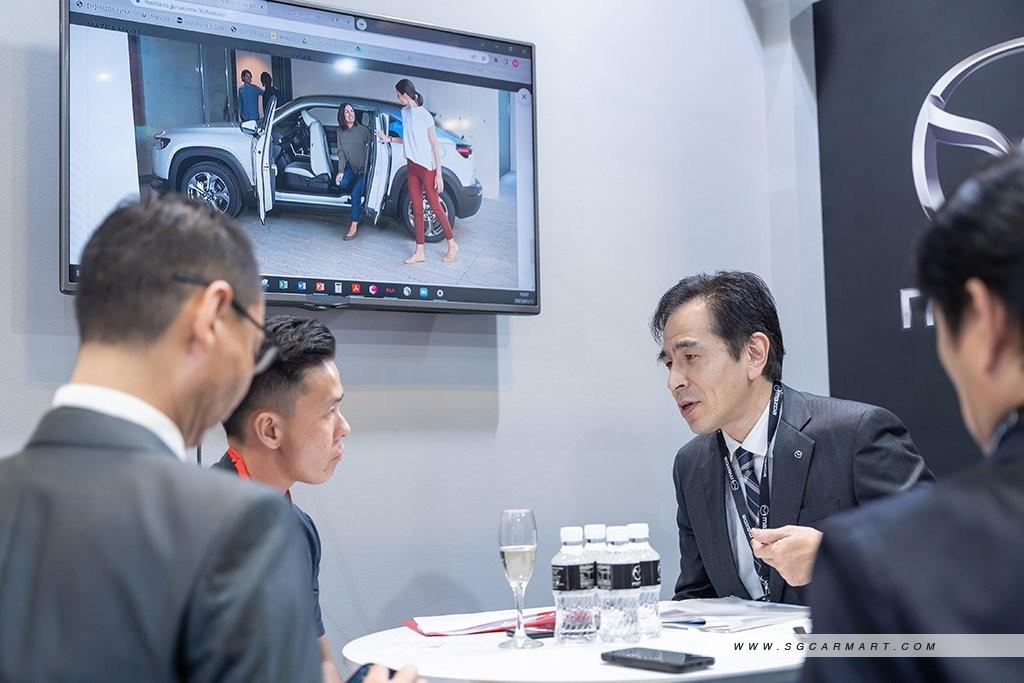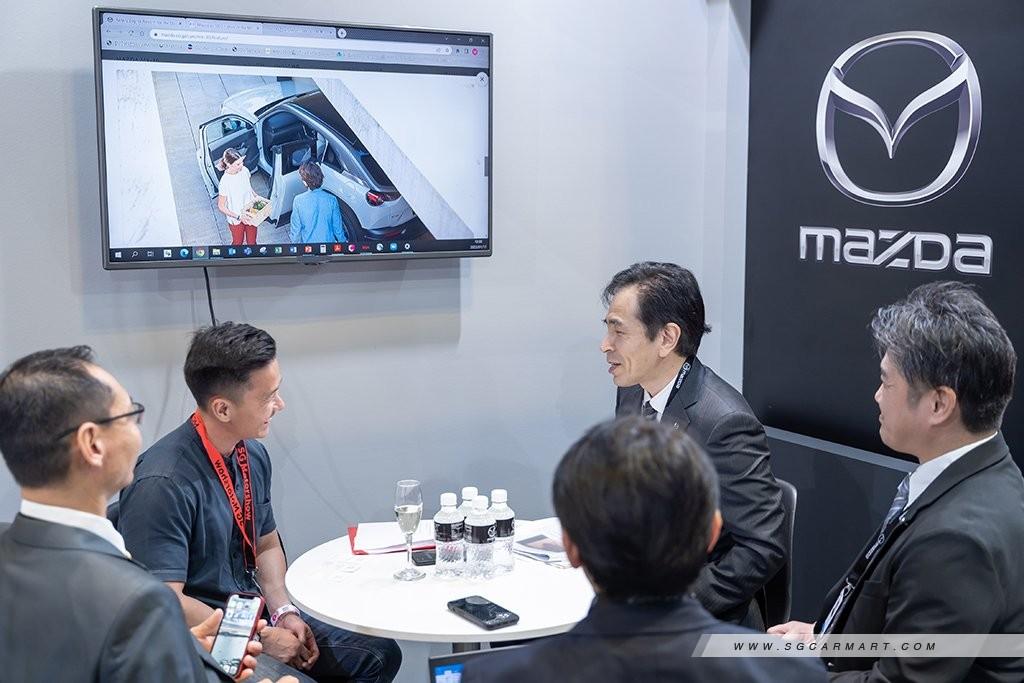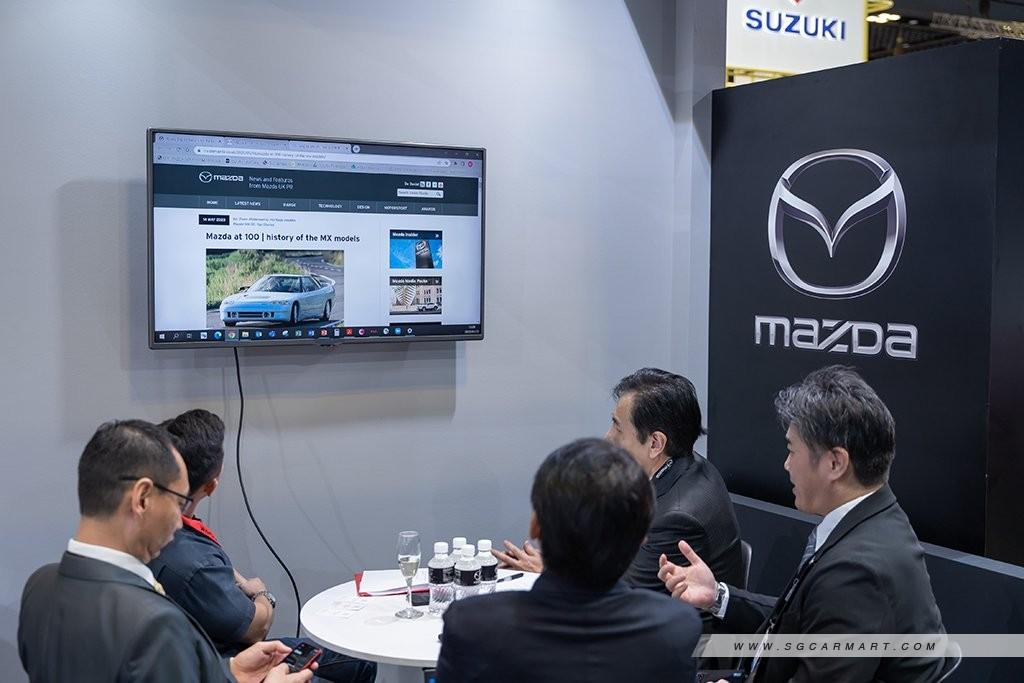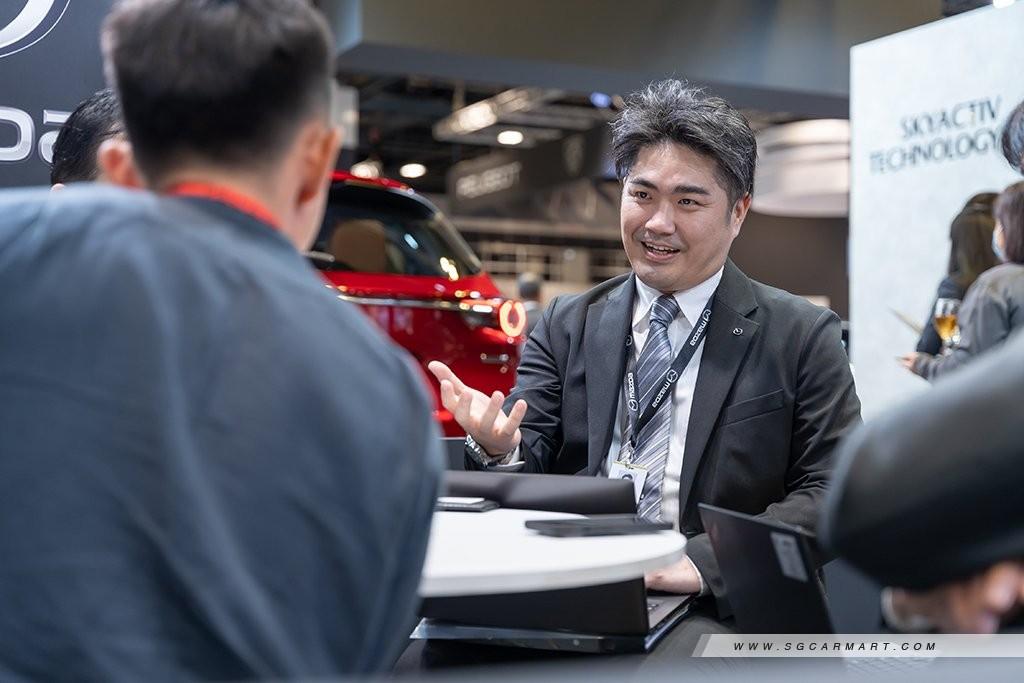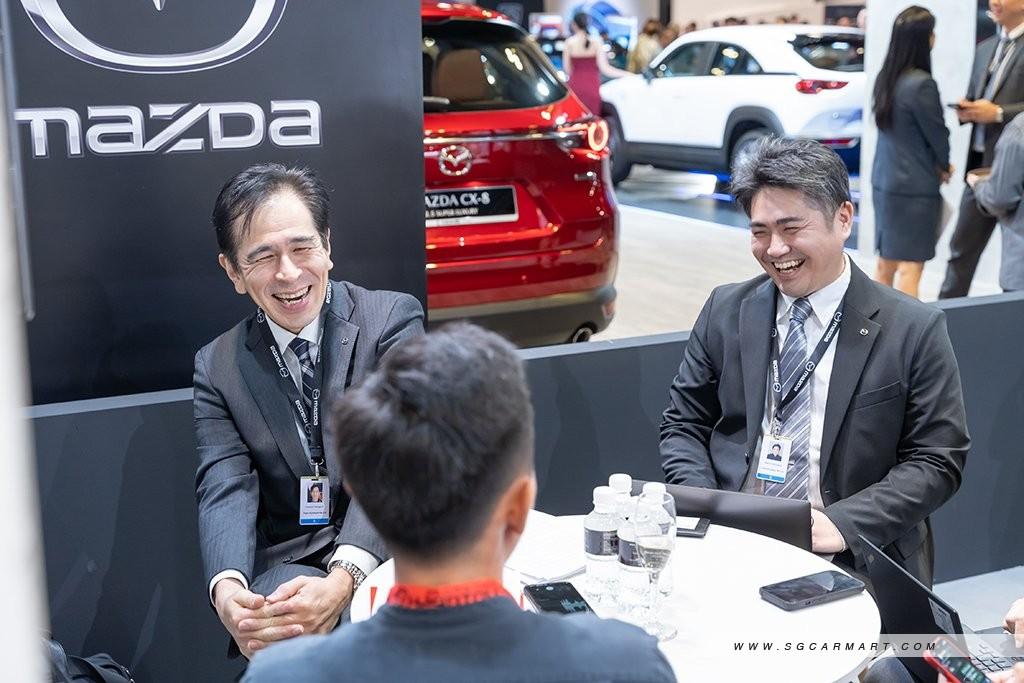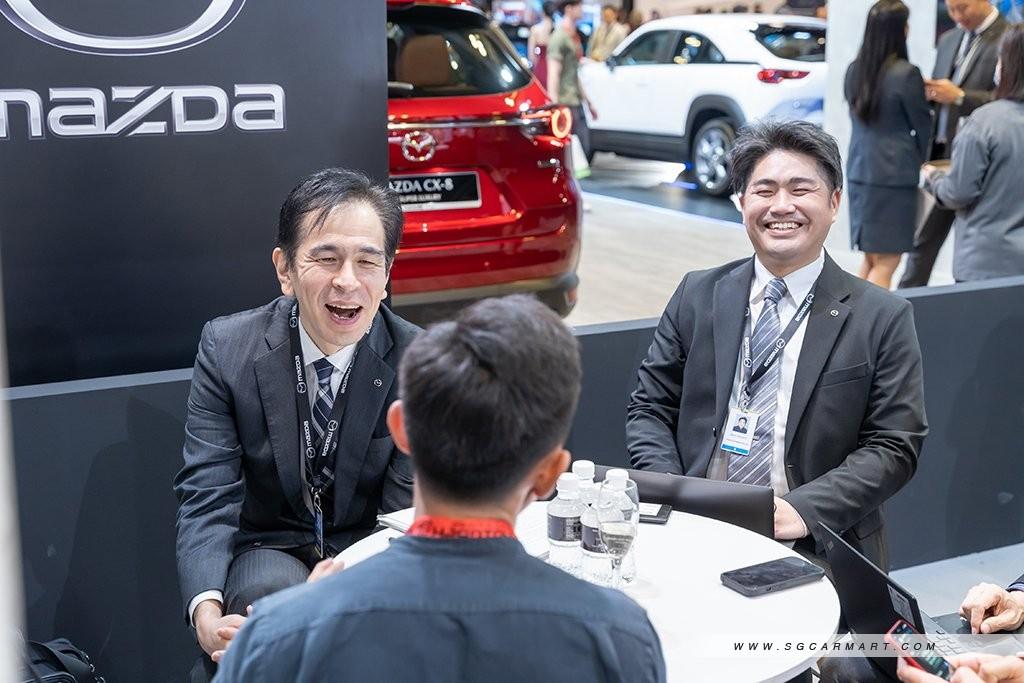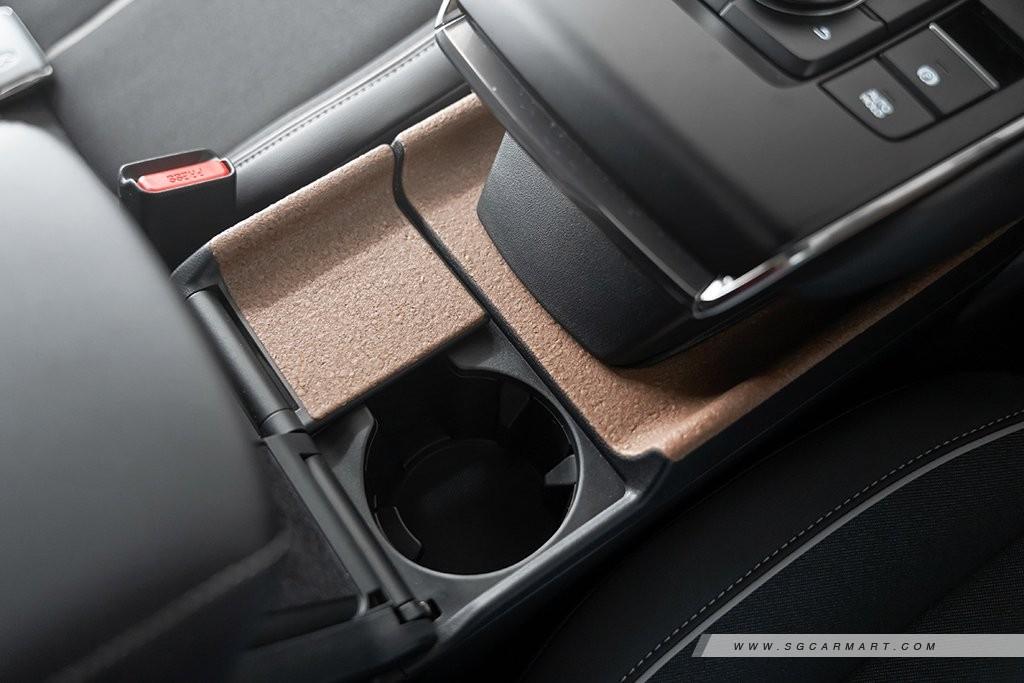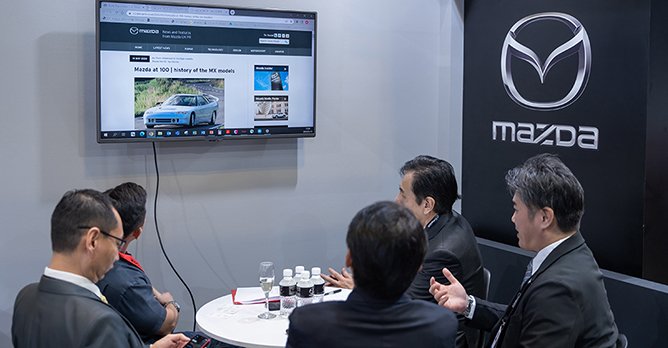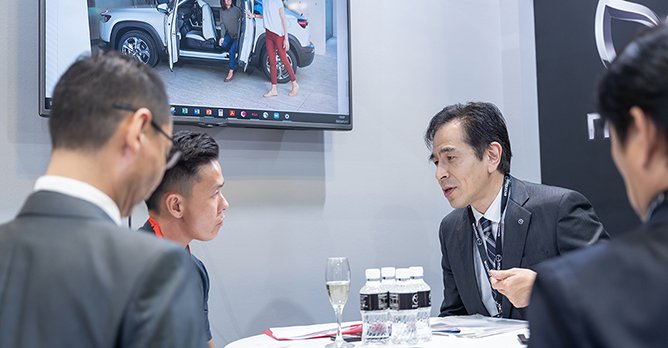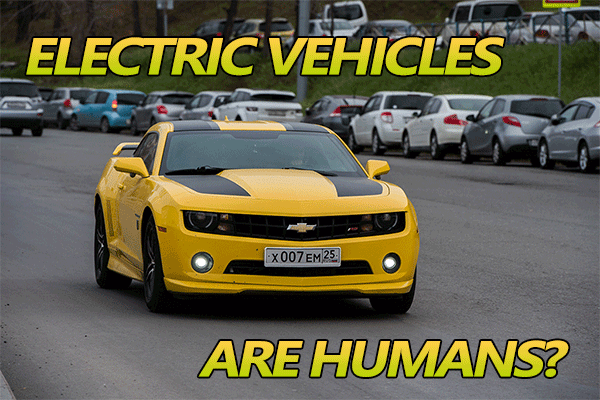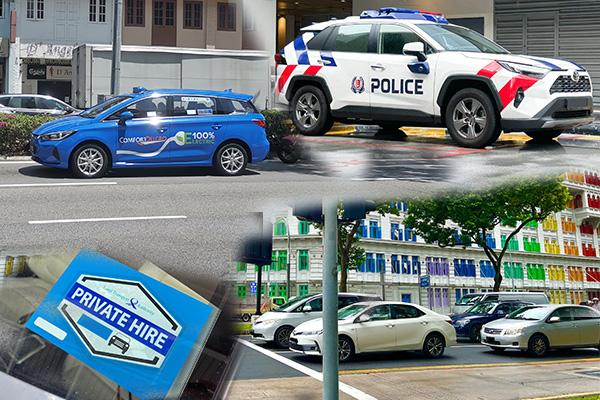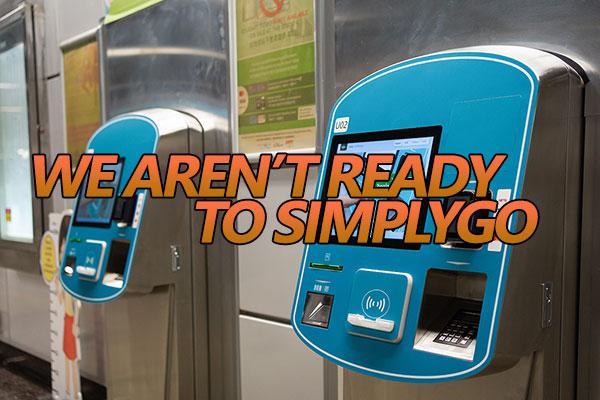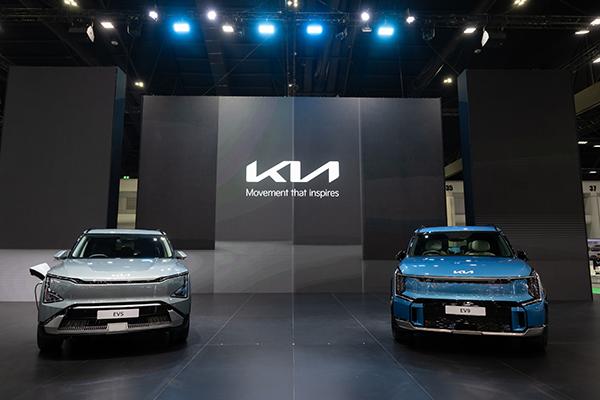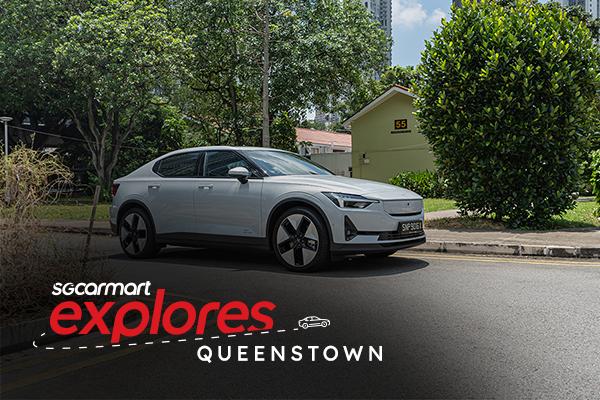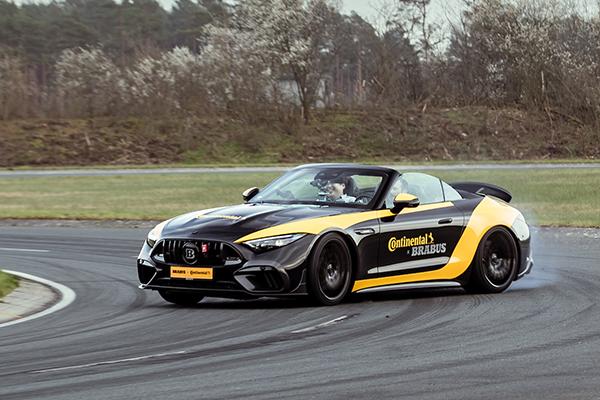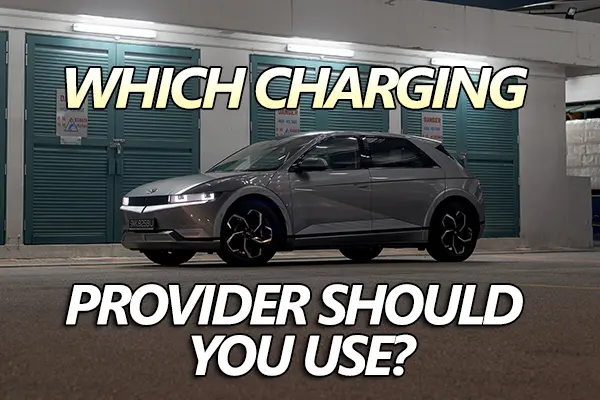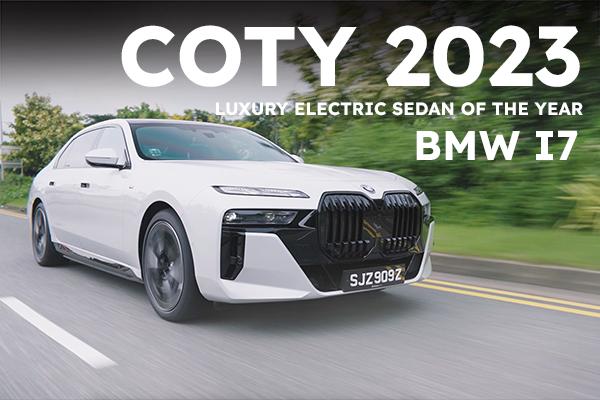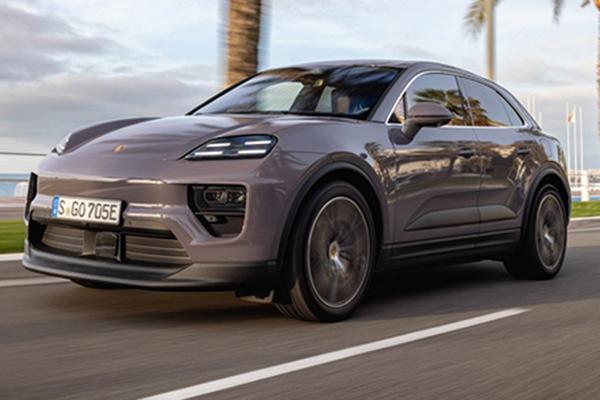Getting to know the Mazda MX-30 electric car a little better
27 Jan 2023|6,477 views
At a time when carmakers are busy introducing multiple electric vehicles in their lineup, it seems Mazda has been lagging behind. Thankfully, the Japanese marque has finally launched the MX-30, its first all-electric production vehicle, at the recently concluded Singapore Motor Show 2023.
Which is exactly why we found the need to speak to the man in charge of the car itself - Program Manager Koichiro Yamaguchi - to better understand the logic behind the very creation of the Mazda MX-30.
Choice of name
For instance, why would a car like this have the 'MX' moniker? Wouldn't the prefix be better off with a car that's low-slung and sporty? Something say, more similar to the MX-5 sports car, perhaps?
Yamaguchi, on the other hand, begs to differ because while the 'MX' prefix, which stems from 'Mazda eXperimental', has a very unique and special meaning to Mazda fans globally (thanks to the iconic and popular Mazda MX-5), the 'MX' is supposed to be given to a car that can challenge itself and deliver new values without being confined by convention regardless of body type.
And in the case of the MX-30, not only is it the first fully-electric car for Mazda, which is a challenge in itself, it's a model that's completely different from what you can find in the carmaker's current stable. The design has evolved, the cabin is far more luxurious and it drives more keenly than you'd expect from an electric compact crossover.
Choice of doors

 Program Manager Koichiro Yamaguchi (centre) and Asean PR Manager Makoto Maruyama having a laugh with me Driving aside, after spending four days with the car, I couldn't quite figure out why the need for rear-hinged freestyle doors, the same ones that can also be found on the Mazda RX-8 sports car as well as the BMW i3.
Program Manager Koichiro Yamaguchi (centre) and Asean PR Manager Makoto Maruyama having a laugh with me Driving aside, after spending four days with the car, I couldn't quite figure out why the need for rear-hinged freestyle doors, the same ones that can also be found on the Mazda RX-8 sports car as well as the BMW i3.
One of the biggest advantages of having freestyle doors is that car appears to have two doors rather than four, allowing it to have that compact, sleek and sporty look. It does look cool, I'll give you that, but living with this with kids may not exactly be the most ideal choice.
You see, how it works is that the rear doors can only be in use when the front doors are opened. Try slamming the front door without shutting the rear doors first and you might find yourself making an immediate appointment to Mazda's workshop.
But like I said, it does look cool and, according to Yamaguchi, such a design was chosen because freestyle doors are unique and creative, which is exactly suited for the MX-30's audience, a young bunch who can enjoy creativity and style while acknowledging the fact that having four doors serves as a functional purpose.
Choice of materials
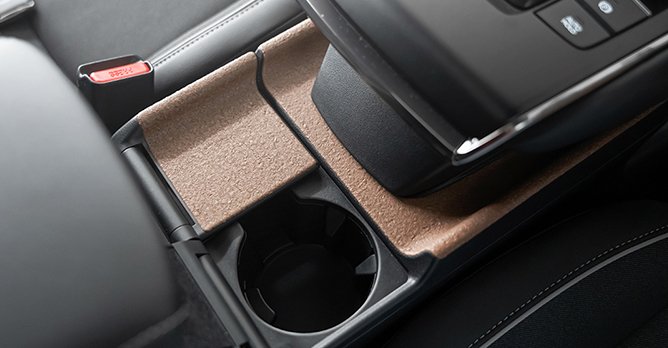
 The use of cork materials in the MX-30 makes a witty and artful design nod to Mazda's founding business The ethos of creativity and style continues on the inside of the car as well. From denim-like fabric to breathing fibre - a soft touch material made from recycled PET bottles - everything in the cabin feels and breathes sustainability. And for the first time in a Mazda car, cork material is used. Yes, cork.
The use of cork materials in the MX-30 makes a witty and artful design nod to Mazda's founding business The ethos of creativity and style continues on the inside of the car as well. From denim-like fabric to breathing fibre - a soft touch material made from recycled PET bottles - everything in the cabin feels and breathes sustainability. And for the first time in a Mazda car, cork material is used. Yes, cork.
However, Yamaguchi said that this should come as no surprise, considering the Japanese company started life as Toyo Cork Kogyo back in 1920. The whole idea of the use of cork materials is to have the MX-30 electric car make a witty and artful design nod to Mazda's founding business.
Choice of not having a one-pedal drive
Another evident point of having the MX-30 done the 'Mazda way' is the fact that the car doesn't come with an option of a one-pedal drive, meaning to say you could easily pilot the electric vehicle with just the accelerator pedal. Releasing pressure on it would bring about a strong regenerative braking that would allow the car to come to an eventual stop.
As the car comes with a rather small 35.5kWh battery pack, you get a range of about 200km on a full charge, which is rather measly if you were to compare this with other electric vehicles that are available in the market right now.
As such, it's hard to understand why Mazda would not have the one-pedal drive option, which would have a strong regenerative braking to help charge the battery pack more efficiently.
While Yamaguchi agreed with me, he argued that it was important to think about the driver's comfort levels when driving the MX-30. While having a strong regenerative braking helps with a longer driving range, the driver will constantly be thrown forward when the braking comes into effect. "With the MX-30, we decided to start with the human aspect first, and not the car," said Yamaguchi.
Interested to know more about Mazda? Here are some stories you might be keen in:
The Mazda CX-8 is the eighth wonder
The Mazda CX-3 is one delightful little machine
The Mazda CX-5 looks good and feels good
The Mazda MX-30 is an amicable electric car
Which is exactly why we found the need to speak to the man in charge of the car itself - Program Manager Koichiro Yamaguchi - to better understand the logic behind the very creation of the Mazda MX-30.
Choice of name
For instance, why would a car like this have the 'MX' moniker? Wouldn't the prefix be better off with a car that's low-slung and sporty? Something say, more similar to the MX-5 sports car, perhaps?
Yamaguchi, on the other hand, begs to differ because while the 'MX' prefix, which stems from 'Mazda eXperimental', has a very unique and special meaning to Mazda fans globally (thanks to the iconic and popular Mazda MX-5), the 'MX' is supposed to be given to a car that can challenge itself and deliver new values without being confined by convention regardless of body type.
And in the case of the MX-30, not only is it the first fully-electric car for Mazda, which is a challenge in itself, it's a model that's completely different from what you can find in the carmaker's current stable. The design has evolved, the cabin is far more luxurious and it drives more keenly than you'd expect from an electric compact crossover.
Choice of doors

One of the biggest advantages of having freestyle doors is that car appears to have two doors rather than four, allowing it to have that compact, sleek and sporty look. It does look cool, I'll give you that, but living with this with kids may not exactly be the most ideal choice.
You see, how it works is that the rear doors can only be in use when the front doors are opened. Try slamming the front door without shutting the rear doors first and you might find yourself making an immediate appointment to Mazda's workshop.
But like I said, it does look cool and, according to Yamaguchi, such a design was chosen because freestyle doors are unique and creative, which is exactly suited for the MX-30's audience, a young bunch who can enjoy creativity and style while acknowledging the fact that having four doors serves as a functional purpose.
Choice of materials

However, Yamaguchi said that this should come as no surprise, considering the Japanese company started life as Toyo Cork Kogyo back in 1920. The whole idea of the use of cork materials is to have the MX-30 electric car make a witty and artful design nod to Mazda's founding business.
Choice of not having a one-pedal drive
Another evident point of having the MX-30 done the 'Mazda way' is the fact that the car doesn't come with an option of a one-pedal drive, meaning to say you could easily pilot the electric vehicle with just the accelerator pedal. Releasing pressure on it would bring about a strong regenerative braking that would allow the car to come to an eventual stop.
As the car comes with a rather small 35.5kWh battery pack, you get a range of about 200km on a full charge, which is rather measly if you were to compare this with other electric vehicles that are available in the market right now.
As such, it's hard to understand why Mazda would not have the one-pedal drive option, which would have a strong regenerative braking to help charge the battery pack more efficiently.
While Yamaguchi agreed with me, he argued that it was important to think about the driver's comfort levels when driving the MX-30. While having a strong regenerative braking helps with a longer driving range, the driver will constantly be thrown forward when the braking comes into effect. "With the MX-30, we decided to start with the human aspect first, and not the car," said Yamaguchi.
Interested to know more about Mazda? Here are some stories you might be keen in:
The Mazda CX-8 is the eighth wonder
The Mazda CX-3 is one delightful little machine
The Mazda CX-5 looks good and feels good
The Mazda MX-30 is an amicable electric car
At a time when carmakers are busy introducing multiple electric vehicles in their lineup, it seems Mazda has been lagging behind. Thankfully, the Japanese marque has finally launched the MX-30, its first all-electric production vehicle, at the recently concluded Singapore Motor Show 2023.
Which is exactly why we found the need to speak to the man in charge of the car itself - Program Manager Koichiro Yamaguchi - to better understand the logic behind the very creation of the Mazda MX-30.
Choice of name
For instance, why would a car like this have the 'MX' moniker? Wouldn't the prefix be better off with a car that's low-slung and sporty? Something say, more similar to the MX-5 sports car, perhaps?
Yamaguchi, on the other hand, begs to differ because while the 'MX' prefix, which stems from 'Mazda eXperimental', has a very unique and special meaning to Mazda fans globally (thanks to the iconic and popular Mazda MX-5), the 'MX' is supposed to be given to a car that can challenge itself and deliver new values without being confined by convention regardless of body type.
And in the case of the MX-30, not only is it the first fully-electric car for Mazda, which is a challenge in itself, it's a model that's completely different from what you can find in the carmaker's current stable. The design has evolved, the cabin is far more luxurious and it drives more keenly than you'd expect from an electric compact crossover.
Choice of doors

 Program Manager Koichiro Yamaguchi (centre) and Asean PR Manager Makoto Maruyama having a laugh with me Driving aside, after spending four days with the car, I couldn't quite figure out why the need for rear-hinged freestyle doors, the same ones that can also be found on the Mazda RX-8 sports car as well as the BMW i3.
Program Manager Koichiro Yamaguchi (centre) and Asean PR Manager Makoto Maruyama having a laugh with me Driving aside, after spending four days with the car, I couldn't quite figure out why the need for rear-hinged freestyle doors, the same ones that can also be found on the Mazda RX-8 sports car as well as the BMW i3.
One of the biggest advantages of having freestyle doors is that car appears to have two doors rather than four, allowing it to have that compact, sleek and sporty look. It does look cool, I'll give you that, but living with this with kids may not exactly be the most ideal choice.
You see, how it works is that the rear doors can only be in use when the front doors are opened. Try slamming the front door without shutting the rear doors first and you might find yourself making an immediate appointment to Mazda's workshop.
But like I said, it does look cool and, according to Yamaguchi, such a design was chosen because freestyle doors are unique and creative, which is exactly suited for the MX-30's audience, a young bunch who can enjoy creativity and style while acknowledging the fact that having four doors serves as a functional purpose.
Choice of materials

 The use of cork materials in the MX-30 makes a witty and artful design nod to Mazda's founding business The ethos of creativity and style continues on the inside of the car as well. From denim-like fabric to breathing fibre - a soft touch material made from recycled PET bottles - everything in the cabin feels and breathes sustainability. And for the first time in a Mazda car, cork material is used. Yes, cork.
The use of cork materials in the MX-30 makes a witty and artful design nod to Mazda's founding business The ethos of creativity and style continues on the inside of the car as well. From denim-like fabric to breathing fibre - a soft touch material made from recycled PET bottles - everything in the cabin feels and breathes sustainability. And for the first time in a Mazda car, cork material is used. Yes, cork.
However, Yamaguchi said that this should come as no surprise, considering the Japanese company started life as Toyo Cork Kogyo back in 1920. The whole idea of the use of cork materials is to have the MX-30 electric car make a witty and artful design nod to Mazda's founding business.
Choice of not having a one-pedal drive
Another evident point of having the MX-30 done the 'Mazda way' is the fact that the car doesn't come with an option of a one-pedal drive, meaning to say you could easily pilot the electric vehicle with just the accelerator pedal. Releasing pressure on it would bring about a strong regenerative braking that would allow the car to come to an eventual stop.
As the car comes with a rather small 35.5kWh battery pack, you get a range of about 200km on a full charge, which is rather measly if you were to compare this with other electric vehicles that are available in the market right now.
As such, it's hard to understand why Mazda would not have the one-pedal drive option, which would have a strong regenerative braking to help charge the battery pack more efficiently.
While Yamaguchi agreed with me, he argued that it was important to think about the driver's comfort levels when driving the MX-30. While having a strong regenerative braking helps with a longer driving range, the driver will constantly be thrown forward when the braking comes into effect. "With the MX-30, we decided to start with the human aspect first, and not the car," said Yamaguchi.
Interested to know more about Mazda? Here are some stories you might be keen in:
The Mazda CX-8 is the eighth wonder
The Mazda CX-3 is one delightful little machine
The Mazda CX-5 looks good and feels good
The Mazda MX-30 is an amicable electric car
Which is exactly why we found the need to speak to the man in charge of the car itself - Program Manager Koichiro Yamaguchi - to better understand the logic behind the very creation of the Mazda MX-30.
Choice of name
For instance, why would a car like this have the 'MX' moniker? Wouldn't the prefix be better off with a car that's low-slung and sporty? Something say, more similar to the MX-5 sports car, perhaps?
Yamaguchi, on the other hand, begs to differ because while the 'MX' prefix, which stems from 'Mazda eXperimental', has a very unique and special meaning to Mazda fans globally (thanks to the iconic and popular Mazda MX-5), the 'MX' is supposed to be given to a car that can challenge itself and deliver new values without being confined by convention regardless of body type.
And in the case of the MX-30, not only is it the first fully-electric car for Mazda, which is a challenge in itself, it's a model that's completely different from what you can find in the carmaker's current stable. The design has evolved, the cabin is far more luxurious and it drives more keenly than you'd expect from an electric compact crossover.
Choice of doors

One of the biggest advantages of having freestyle doors is that car appears to have two doors rather than four, allowing it to have that compact, sleek and sporty look. It does look cool, I'll give you that, but living with this with kids may not exactly be the most ideal choice.
You see, how it works is that the rear doors can only be in use when the front doors are opened. Try slamming the front door without shutting the rear doors first and you might find yourself making an immediate appointment to Mazda's workshop.
But like I said, it does look cool and, according to Yamaguchi, such a design was chosen because freestyle doors are unique and creative, which is exactly suited for the MX-30's audience, a young bunch who can enjoy creativity and style while acknowledging the fact that having four doors serves as a functional purpose.
Choice of materials

However, Yamaguchi said that this should come as no surprise, considering the Japanese company started life as Toyo Cork Kogyo back in 1920. The whole idea of the use of cork materials is to have the MX-30 electric car make a witty and artful design nod to Mazda's founding business.
Choice of not having a one-pedal drive
Another evident point of having the MX-30 done the 'Mazda way' is the fact that the car doesn't come with an option of a one-pedal drive, meaning to say you could easily pilot the electric vehicle with just the accelerator pedal. Releasing pressure on it would bring about a strong regenerative braking that would allow the car to come to an eventual stop.
As the car comes with a rather small 35.5kWh battery pack, you get a range of about 200km on a full charge, which is rather measly if you were to compare this with other electric vehicles that are available in the market right now.
As such, it's hard to understand why Mazda would not have the one-pedal drive option, which would have a strong regenerative braking to help charge the battery pack more efficiently.
While Yamaguchi agreed with me, he argued that it was important to think about the driver's comfort levels when driving the MX-30. While having a strong regenerative braking helps with a longer driving range, the driver will constantly be thrown forward when the braking comes into effect. "With the MX-30, we decided to start with the human aspect first, and not the car," said Yamaguchi.
Interested to know more about Mazda? Here are some stories you might be keen in:
The Mazda CX-8 is the eighth wonder
The Mazda CX-3 is one delightful little machine
The Mazda CX-5 looks good and feels good
The Mazda MX-30 is an amicable electric car
Thank You For Your Subscription.
